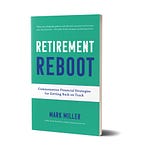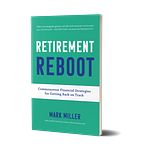
Covid-19 had taken the lives of 182,000 people in nursing homes, assisted living and other long-term care facilities . . . one-third of the national total. The troubles have intensified a spotlight on long-running questions about how communities can do a better job supporting people who need care but want to live outside an institutional setting. That question generates a big list of challenges for communities, health care systems and policymakers.
I wrote about this topic in a story for the New York Times several weeks ago, and I’ve been following it up with a series of conversations on the podcast.
My guest this week is Peter Fitzgerald. Peter is executive vice president for policy and strategy at the National PACE Association. PACE stands for Programs of All-Inclusive Care for the Elderly. This is a unique, innovative program that recipes its funding from both Medicaid and Medicare.
PACE provides medical and social services that allow frail seniors to live independently. It serves about 55,000 people in 30 states around the country. Most are low income and eligible for both Medicare and Medicaid. PACE is available only in states that decide to offer it. But the program is poised for a possible dramatic expansion.
The American Rescue Act, passed by Congress in March, raises the federal share of states’ spending on home and community-based services by $12.7 billion over the coming year, and PACE is among the eligible programs. More recently, Senator Casey (D-PA) introduced legislation that aims specifically to expand PACE.
And the Biden administration’s proposed infrastructure plan includes a $400 billion expansion in Medicaid funding for home-based care. Some of that money could find its way to PACE programs. That would allow it to expand . . . not only in terms of the number of seniors served, but also beyond the primarily low-income population PACE serves now.
I asked Peter to explain how PACE works, and why it often is a superior option to institutional care. We also talked about the prospects for expansion.
If you’re interested in finding a PACE program where you live, check out the association’s online guide to programs around the country.
Listen to the podcast by clicking the player icon at the top of the newsletter. The podcast also can be found on Apple Podcasts, Spotify and Stitcher.
Medicare Out-of-Pocket Costs: How Do Enrollees Get Protection?
Medicare smooths out much of the variation in the healthcare expenses that seniors incur -- but out-of-pocket costs can be high if you’re not careful.
Most Medicare enrollees blunt out-of-pocket risk one way or another. According to new research by the Kaiser Family Foundation, 39% were enrolled in Medicare Advantage plans in 2018; these managed-care commercial alternatives to Original Medicare have built-in caps on out-of-pocket outlays. The rest are enrolled in traditional Medicare, which does not have a built-in out-of-pocket cap. Most of these enrollees get out-of-pocket protection from Medigap, retiree coverage or Medicaid.
But 10% of Medicare enrollees have no protection from this risk. They’re in traditional Medicare but have no supplemental coverage.
That is a worrisome finding. This year, an Original Medicare beneficiary without supplemental coverage is subject to a deductible of $1,484 for an inpatient hospitalization plus daily copayments for extended hospital and skilled nursing facility stays. There’s also a separate deductible of $203 plus 20% coinsurance for most physician and other outpatient services, including for drugs administered by physicians for cancer and other serious medical conditions.
Advantage plans, meanwhile, are required by law to cap annual out-of-pocket expenses: In 2020, the average cap was $4,925 for in-network services, according to Kaiser, while the cap for out-of-network services is much higher, at $8,828. In Original Medicare, the average out of pocket spending among traditional Medicare beneficiaries in 2018 was $6,150, according to unpublished Kaiser data. That figure includes premiums and out-of-pocket outlays for uncovered services (such as dental, vision, and hearing care).
Here’s a summary I put together summarizing Medicare’s out-of-pocket structure. As you can see, it’s quite a patchwork:
I explore the implications of this patchwork of out-of-pocket protections in my latest Morningstar column.
Subscribe to the newsletter
You’re subscribed to occasional, short posts sent to my free list. Sign up for the paid edition to receive my weekly in-depth report, plus online access to my series of retirement guides.













